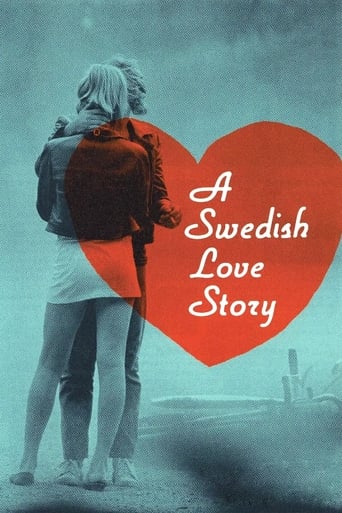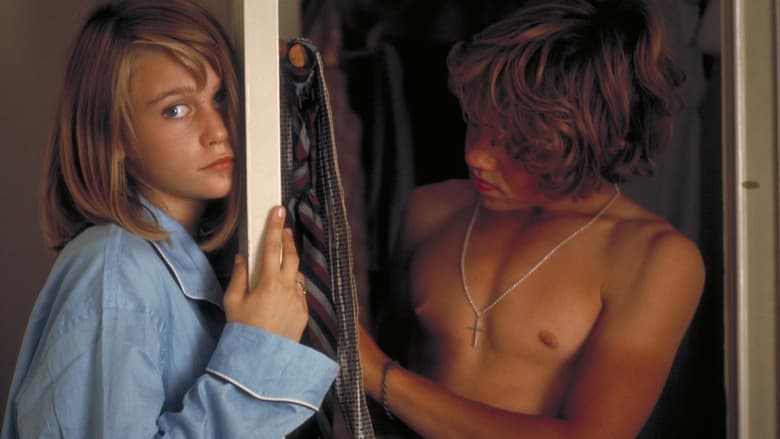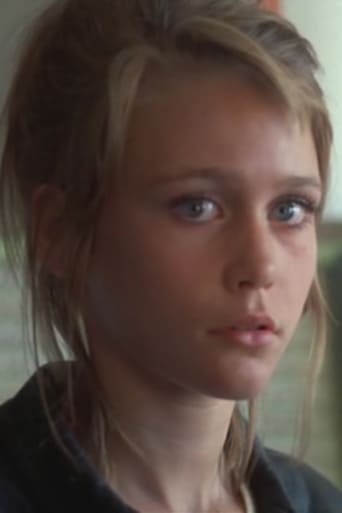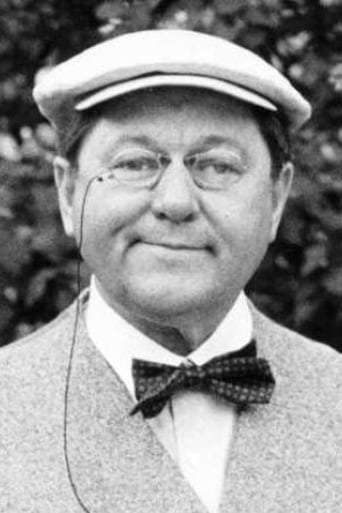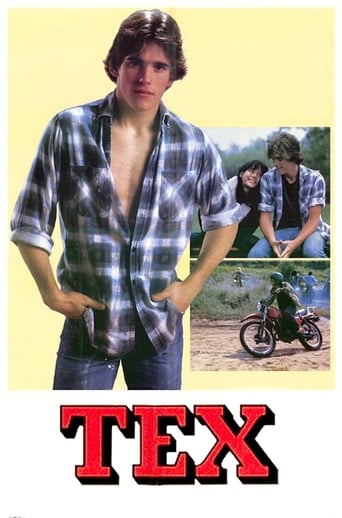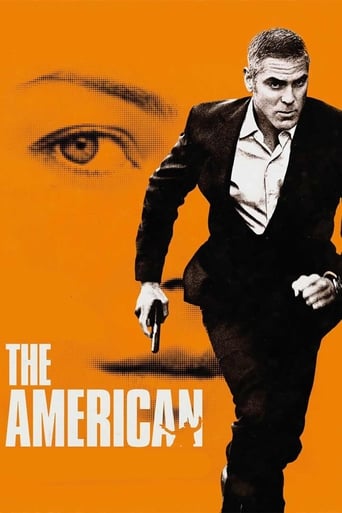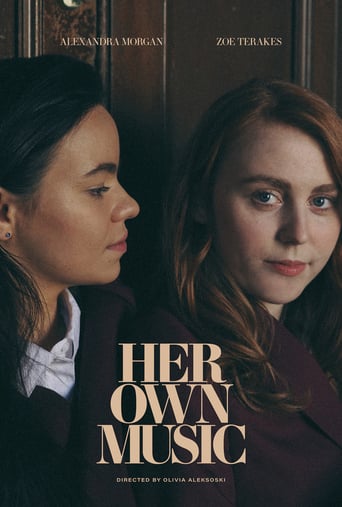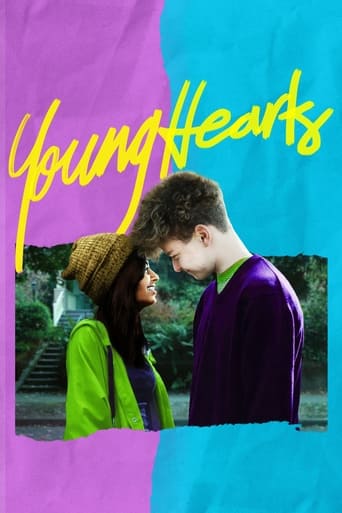A Swedish Love Story (1970)
The puppy love of two teenagers is set against a backdrop of adults struggling with their own lives. As a couple in love, they don't care about anything but themselves and seem totally unaware about everything that surrounds them.
Watch Trailer
Free Trial Channels
Cast


Similar titles
Reviews
ridiculous rating
The film may be flawed, but its message is not.
A clunky actioner with a handful of cool moments.
A terrific literary drama and character piece that shows how the process of creating art can be seen differently by those doing it and those looking at it from the outside.
Swedish auteur Roy Andersson's feature debut at the age of 27, who has only made 5 films so far (mainly due to a 25-year hiatus from 1975-2000 of directing feature film, he has made many shorts though during the spell), his latest work A PIGEON SAT ON A BRANCH REFLECTING ON EXISTENCE (2014), is a prestigious Golden Lion winner.A Swedish LOVE STORY, centres on the puppy love between two teenagers Pär (Sohlman) and Annika (Kylin), and broaches tenderly their incipient sexual awakening. Set in the sun-drenched urban and sun-dappled rural Sweden, its colour scheme and raw warmth seem to contradict the typecast impression of Scandinavian landscape, a tinge of unusualness can be sensibly discovered through the non-existent narrative and its time-capsule pop references of the time: transistor radio, leather jackets, moped, smoking cigarettes (to emulate a sophisticated mien of adults), and pop songs aplenty. The intimacy and spontaneity between the two young leads suffice to induce a pleasant if to a certain extent, lackadaisical state of awareness. Ann-Sofie Kylin imbues her naturalistic pizazz potently in her laconic register and feline appearance (her captivating blue eyes in particular), and Rolf Sohlman, not a conventionally handsome boy, but his gauche precociousness scintillates great chemistry with Kylin.However, a tongue-in-cheek savour of Andersson's shrewd perception of the contemporary society lies in the adulthood, Pär's father Lasse (Tellfelt) is a working-class garage owner whereas Annika's father John (Norström), is an ambitious refrigerator salesman, and the relationship between him and Annika's mother Elsa (Weivers) is constantly under the strain. Another prominent character is Annika's Auntie, Eva (Lindblom), a single woman, who has just been released from the convalescent hospital in the beginning and forever struck by a lugubrious melancholy since she cannot find any footing in real life.The subplots of adults resolve half-heartedly around Pär and Annika's growing affections, until the last act, the puppy love has been sidelined to a a dinner party with both families in the countryside house of Lasse, where cone-shaped paper hats and crayfish bibs are taking the centre stage, the frictions of different views of the world inconveniently emerge, between the two patriarchs. A cynical and chagrined John bursts into a hysterical but also dead serious rant in the foggy morning and an impending tragedy seems to be in the offing. After reaching the emotional peak of despair and chaos, Andersson knowingly finishes off his confident debut with apparent levity but leaves behind an acrimonious taste of social critique which elevates the film above its central teenage affair, a sturdy and unique piece of work from an up-and-coming young filmmaker.
This was the debut of a fresh faced Andersson in his mid twentys. Young love lingers in his mind, and he seeks to make this the core of his first feature film. But remarkably for a young debut there is also a tinge of cynicism in the world removed from the two lovebirds. The contrast of the naivety of Par and Annika with the pessimistic adulthood is not afforded a whole lot of diversity or nuance, but it is grim. In the near end where the adults party and the teenagers frolic, Par and Annika are locked in the same wordless embrace as they have been for the majority of the film, completely certain of their feelings. And the adults drink and drink and egg each other on, snidely take jabs at each other's livelihoods and class until it becomes uncomfortable to watch, and ramble drunkenly on their live's woes while no one really listens. There's a suggestion here from Andersson that the youth too will inherit this universal despair, aimlessness and quest for status - that these memories that are ingrained so strongly will become wisps in the wind as they age. It is fair to say that this issue is tackled better in his later, more iconic trilogy, about the trials and tribulations of being human. But what he does nail is the young love. Ann-Sofie Kylin and Rolf Sohlman are appropriately cast, with the right amount of jitteriness - almost as a direct contrast to the now modern preference of casting adults as teenagers. At first it is just glances, glances that are all too familiar. They linger for just a brief moment longer, and the camera does too - a bit of exposed skin, a hint beneath a skirt. They put on a brave front which Andersson betrays by displaying their age (see the bravado of Par's motorcycling riding, only to be humorously overtaken by a ice-cream licking bicycle rider). And when they get closer, their gaze becomes focused on their own insecurities and they can barely move at all. The music, by Staffan Stenström of Atlantic Ocean, is just perfect - in that sweaty, scarlet-infused club, they dance aimlessly, and try to make their glances discreet, all while brushing past significant, hazy figures in the foreground: teenagers know what they want. The bass-line is heavy, and the vocal is practically begging them to come together. And when they don't, because at this age we are rarely direct, they instead communicate via their friends, to try and gleam some insight into how the other feels. Anyone who has been young and in love will remember this little trick, and then some. And when they finally become a couple, they bury their heads into each other's shoulders as if was the last comfort in the world, and conversation is scarce - why talk when their bodies already radiate what their desires are? When Par is beaten up by an older boy, Annika descends into sobs as if thinking he no longer cares for her. Par is horror stricken that he has been shown up, and is no longer worthy of being with her. They make up in that iconic pose on the basketball court, and it is as if it never happened the next day. The see-sawing affections and dramatic bliss of young love. In the beginning Par watches a friend demonstrate his karate moves and poses, shouting in an exaggerated manner as if he was Bruce Lee himself. Women like big bad fighters, he says. If only it turned out to be that simple.
There's something about this film that hits you - something between the frames and apart from what you see. Even though it's almost 40 years old it feels like it was shot yesterday (especially with the crisp DVD I saw). Having watched a few of these Swedish teenage films, I have to say nobody knows how to portray adolescence on screen like the Swedes do. There's a subtle, real-life touch that no filmmaker in the states can hold a candle to.The two leads are very natural and engaging. Ann-Sofie Kylin has the biggest blue eyes you will ever see and makes a huge impact - despite the fact that her lines throughout the film barely register one paragraph.If you can appreciate a slow film that pays more attention to the small details than to a chugging storyline, this is for you. While I found the ending a little unresolved even for a typical unresolved "70's" ending, it's worth the two hour viewing.
I had seen Roy Andersson's latest film "Sånger från andra våningen" (2000) before I saw this. Both were highly acclaimed in Sweden. I had expected quite a different film this time; after all, it was a love story, and since the director were younger when he made "En kärlekshistoria" I thought it would be somewhat more easygoing. That wasn't at all the case.There are several similarities between the two. There is a main plot about a 15 year old boy, working as a car mechanic assistant, who falls in love with an even younger girl. But that isn't the only thing this movie is about. Rather, it seems like Andersson shows a pessimistic view of the general problems of love in our society; lonely people, couples that quarrel, marriages that break up. Similar to his later film, it is shot slowly and very beautifully, and with a dominant depressive mood floating over it. This particularly depressive feeling which I dare to refer to as a mood characteristic of the whole Swedish society. The conversations are also very Swedish. It could be seen as criticism of the society; or just a twisted documentation of it with black humour (probably more plausible).I couldn't stand that the topic of love was described in this way. Love is the highest source of happiness. This film is completely without exaltation. Again; very Swedish.3/5.

